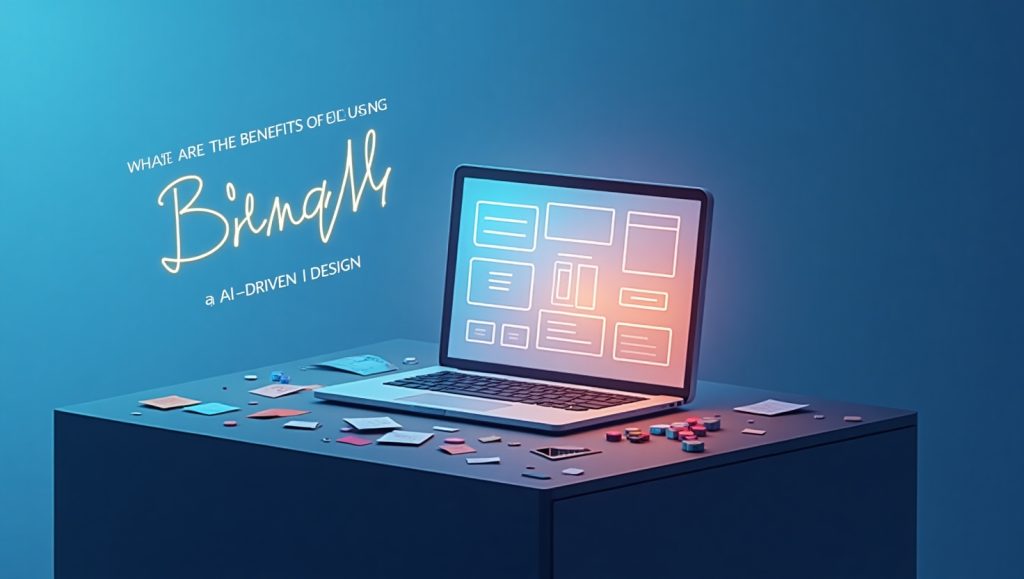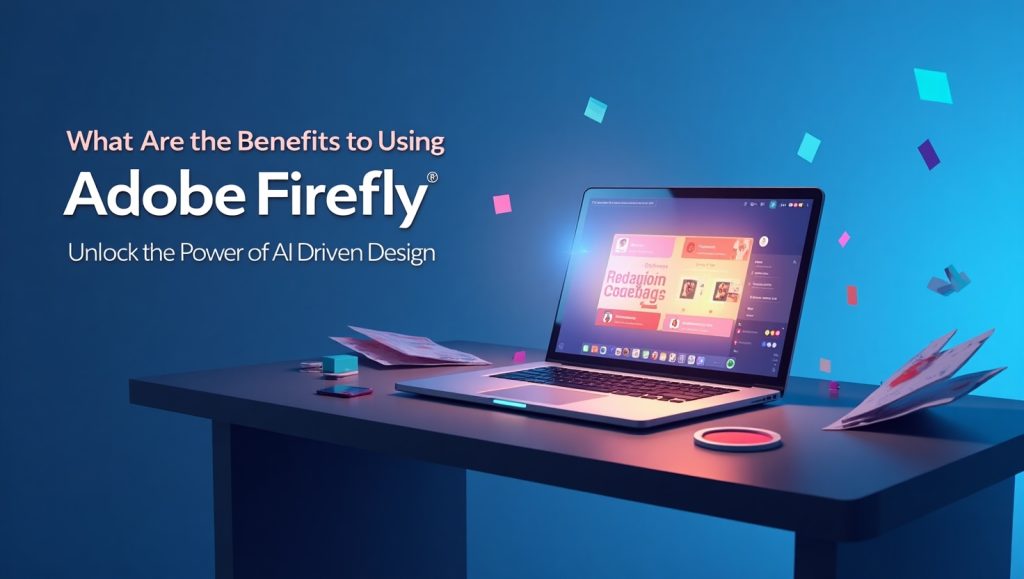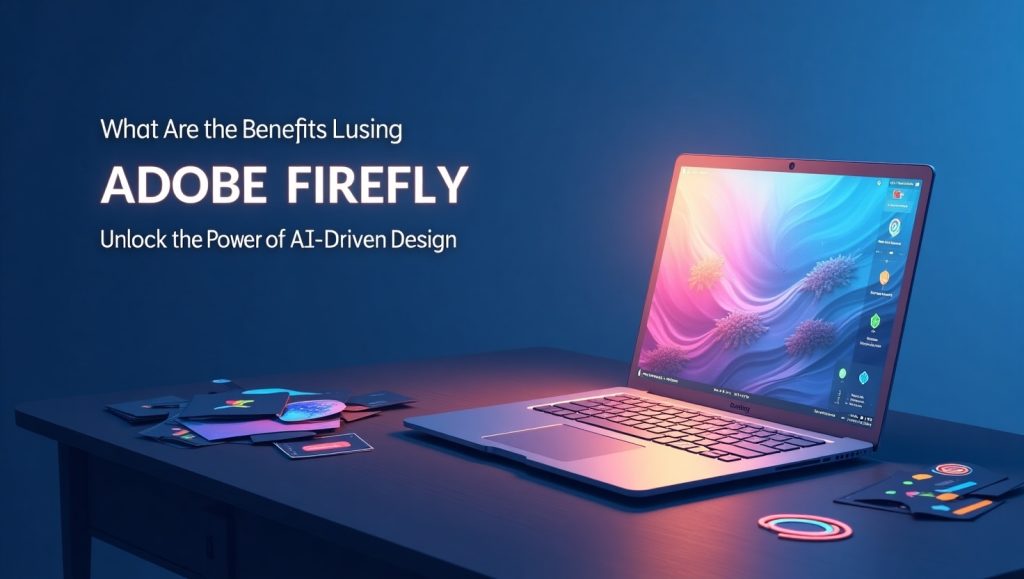
While design tools have gone some distance toward alleviating the dire forces that make UI designs hard to birth, none have captivated minds as much as Adobe Firefly, the next-generation generative AI design tool from Adobe that marries creativity and machine learning to provide unparalleled speed, accuracy, and accessibility to its users. In fact, whether you are an old UI designer or a newcomer to the digital design world, Firefly opens yet another door to helping you with more intuitive visual-based workflows for design enhancement.
In this article, we will analyze the actual advantages of integrating Adobe Firefly in UI design, its differentiating factors compared to other tools, and how Firefly enables better design, faster design, and smarter design. From increasing productivity to ensuring design consistency, Firefly is changing the way UI design is being carried out.
Firefly Enhances Creativity Without Compromising Control
For UI design, the coolest feature about Adobe Firefly would never be so much what it brings to the table; it indeed sets a benchmark by giving incomparable chances for creativity without creating copious tension on the designer. It’s just that not like some AI tools which tend to crank out very rigid results, with Firefly you still get to drive.
Visual Prompts Turn Imagination Into Reality
Firefly can generate images with text prompts, and that is really worth noting. You could type in something like “minimalist dark mode login screen with blue accents” and see variations appear instantly. This would be great forUI mockups, wireframes, and concept building. Instead of spending an eternity on sketching out your ideas possibilities, Firefly acts as your creative assistant and provides options that inspire you in the right direction.
This isn’t about speed; this is about telling the visual narrative.” Designers still touch every detail, but they’re inspired, rather than starting with a completely blank canvas. The result? Designs that are really creative yet capture tangible user needs.
It Speeds Up the Prototyping Process Significantly

With tight timelines for team projects and client work, in contemporary UI design, speed takes precedence. Firefly speeds up workflows with automated UI component generation, visual asset generation, and concept iteration.
Fewer Manual Tasks, More High-Level Design
Consider how long it typically takes to create a button style, a hero image, or a responsive layout from scratch. With Firefly, these components are generated using AI visually, then touched up in a few clicks, and then off to the next task; the interface wireframing aspect has been dramatically condensed in time.
Furthermore, Firefly also complements and integrates well with applications such as Adobe XD and Photoshop. This interoperability allows designers to use generated assets directly within their design applications without switching platforms or performing file format conversions. These time savings leave designers with more time to test, get other people’s feedback, and refine the touchpoints-that really matter for user interface design.
Adobe Firefly Promotes Design Consistency Across Projects
In UI design, consistency is key when establishing trust, usability, and brand integrity. Firefly helps impose visual standards throughout every component so that buttons, menus, and colors are all consistent.
Brand Guidelines Made Easy to Follow
Perhaps the most underrated feature of Adobe Firefly is its ability to almost automatically apply brand guidelines. Whenever you define typography, a color scheme, or an imagery style for your brand, Firefly will generate new assets that remain within such parameters. Therefore, you eliminate human error while keeping your project on brand.
For agencies working with multiple clients at the same time, it allows for quicker assimilation with newer branding systems. Firefly hence acts as an assistant for the brand in all its endeavors to maintain tone and style in digital product applications, so that every app or website maintains a cohesive feeling. This comes in particularly handy when advancing with responsive web design, where a consistent look across various devices poses its own challenges.
.
AI-Powered Image Generation for Better Visual Assets
Firefly is not just for UI elements—it also excels in creating custom graphics, backgrounds, and icons using AI. These visuals play a critical role in user engagement and usability.
Stand Out with Tailored Visuals
Every designer knows how tough it gets sourcing stock images and creating vector art from scratch. Firefly is that different animal because it allows you to create customized graphics that relate closely to your design concept. Describe a style, mood, or theme, and it provides revisions of images to suit the final design into the UI.
The advantage here isn’t just holding an aesthetic-it is also strategic. Frequency-specific visuals convey meaning, direct the user through the interface, and connect dynamically with audiences. Beyond this, Firefly saves you time with production tight – you no longer have to rely on generic images that dilute your app’s identity but instead get original, on-brand assets, built on-demand.
The benefits are useful in user interface design for eCommerce, educational platforms like courses online, and mobile apps: if these visuals enhance the experience for the user, then interfaces live and breathe the intuitive with their whole vibe.
Accessibility and Inclusivity Are Baked Into the Workflow

Designing for accessibility is no longer optional—it’s a requirement. Firefly supports accessibility by helping designers create UI that’s inclusive by default.
Inclusive Design With Just a Few Clicks
Each time a component or image is generated within Firefly, it becomes possible to specify accessibility needs, such as high contrast for visually impaired people or clear, legible fonts. You can even simulate color blindness for testing visual usability. Such measures speed compliance with WCAG standards and keep the designs beautiful at the same time.
It prepares designs for being accessible by non-technical users or junior designers. And it’s even accessible to those new at implementing such products: Firefly will guide spacing, font sizing, and contrast that will help even novices create accessible interfaces. Be it for a government website, public-facing app, or educational tools, this function makes sure no user is left behind.
It Integrates Seamlessly With Adobe’s Creative Ecosystem
One of the strongest selling points of Firefly is its deep integration with Adobe’s other products. Whether you’re working in Adobe XD, Photoshop, or Illustrator, Firefly brings its generative capabilities wherever you are.
Streamlined Workflows With Adobe Tools
There is no need to continuously export and import ideas from one tool to another. For instance, you can generate an icon in Firefly, edit it in Photoshop, and return to XD in real time while designing a mobile app in XD.
That synergy is key to agencies or teams working on much larger digital products. Working within the same ecosystem just saves time, helps collaboration, and keeps file formats uniform.
For designers familiar with Adobe Creative Cloud, Firefly feels like a natural extension, not another tool to learn. This is precisely why it is effective-it augments action rather than disrupts it.
A Great Learning Tool for New Designers
For beginner UI designers, Adobe Firefly is more than just a tool—it’s an interactive learning platform. It helps reduce the steep learning curve usually associated with design.
Learn Design Principles Through Real-Time Feedback
When you type prompts or ask for any design component, it presents you with really great outputs following the best practice. You herein learn by comparing what works and doesn’t work. This is most beneficial for new designers who are still learning layout, spacing and hierarchy principles.
Firefly lowers existing entry barriers as it does not need advance drawing or designing, thereby opening the field to everybody. Guided assistance and intelligent suggestions give users the confidence to explore varying solutions and styles in design. It is like having a mentor built into your design tool.
Thus, it brings UI design to a wider audience, from freelancers to startups that may not have an in-house design team but are still craving slick interfaces.
Conclusion
Adobe Firefly is a creative partner rather than being solely a design tool. It enhances workflow speed, improves creativity, maintains consistency, and bolsters inclusive design. Whether you are an independent designer, part of an agency, or working on your own portfolio, Firefly provides you the very tools you need to create UI designs faster and easier.
Via integration with Adobe Creative Cloud, along with intuitive controls and smart automation, this makes Firefly one of the leading AI-integrated design applications in the market. It certainly earns its spot in your toolbox if you are serious about elevating your UI/UX design process.